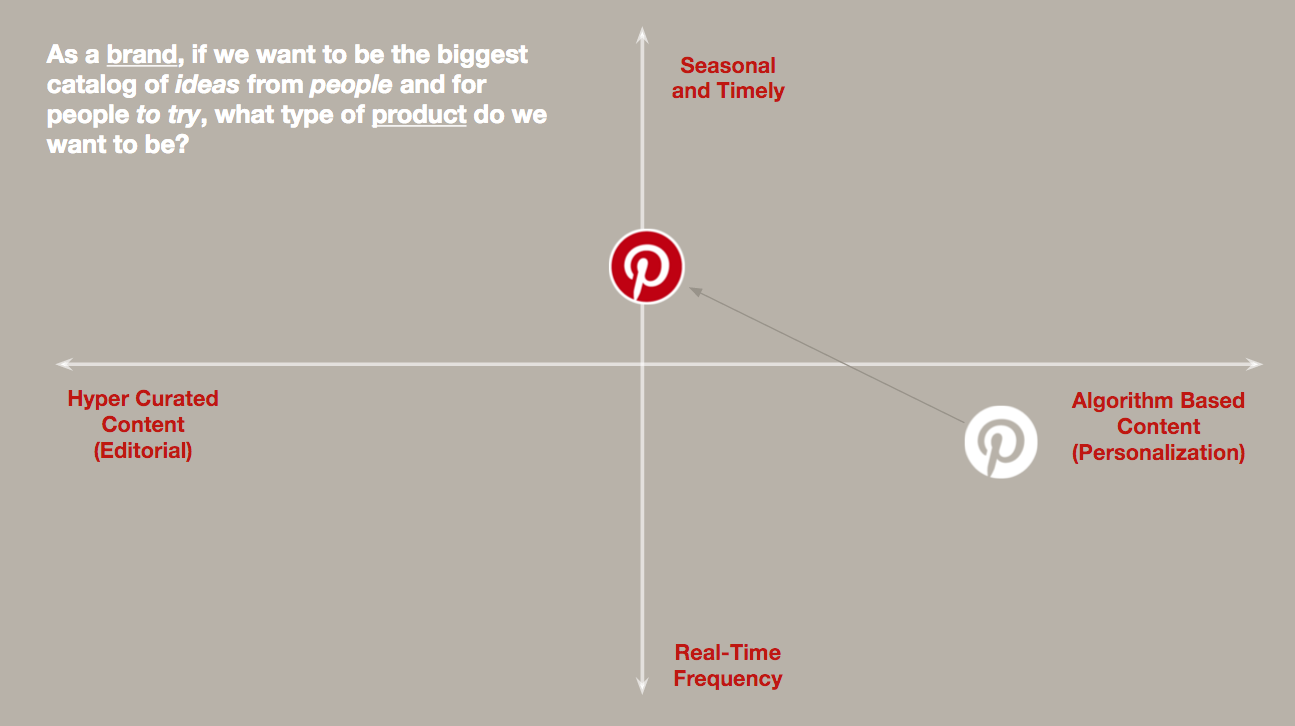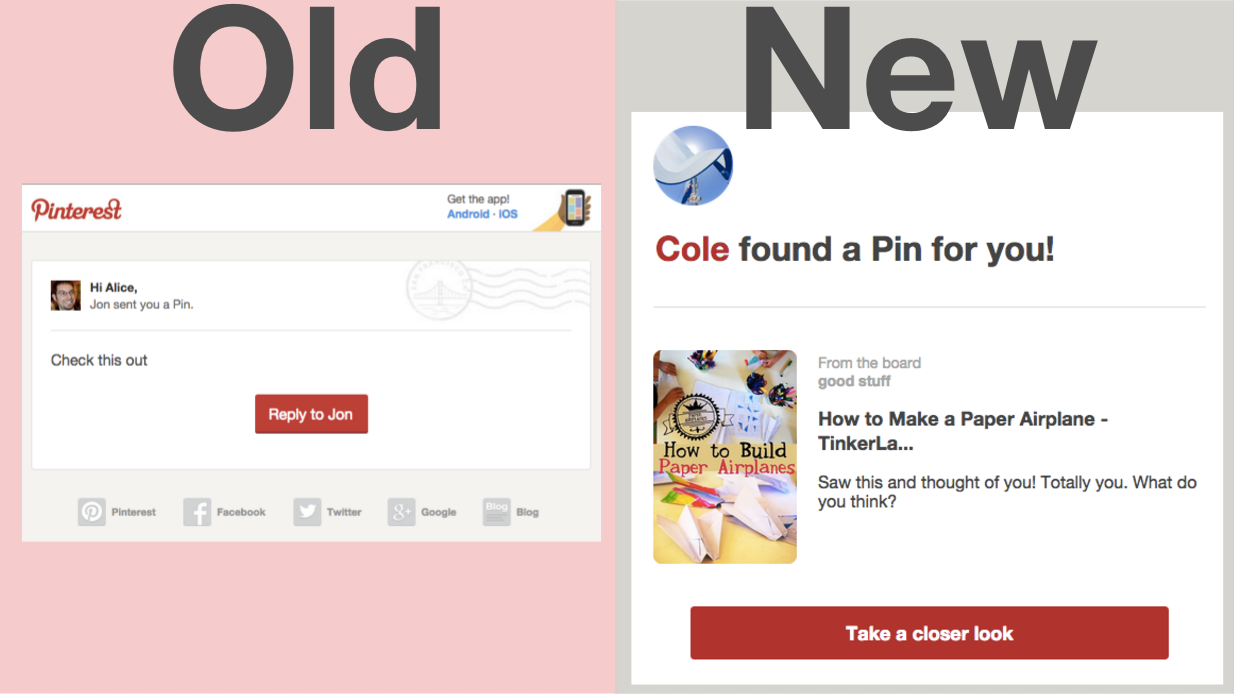Annie Katrina LeeDec 38 min read

Lean on me
The evolving world of growth and marketing
There’s no shortage of articles about how to build a growth team, why you need a growth team, and the differences between marketing and growth teams. But, there aren’t a lot of articles about how these teams should lean on each other and ways to work towards the same vision. Why?
This was puzzling to me when I arrived in San Francisco to join my first startup — Pinterest — in 2012. “Growth” seemed to be the buzzword around the Valley, but when I boiled it down, the tactics were familiar. As a marketer, my job was to sell, position, drive results….and grow. Right?
Wrong.
Soon enough, I learned the ins and outs of the growth hacking community, and why startups gravitate towards them. What I didn’t comprehend was the friction between growth and marketing teams, and why people believed they were mutually exclusive.
I was determined to understand this dichotomy and somehow change this mindset. At Pinterest, one of our core values is “knitting” (pun intended). Knitting means taking the time to learn about other disciplines to help you make better and informed decisions. It’s not just about getting along with people or being nice, or as many big companies say “cross-group collaboration.” It’s about complementing skills and remembering that we’re all here to support the same goal.
Over the years, we’ve gone through rapid change and different ways of working with our growth team, but overall my experience has been positive. Sure, there’s tension, but it’s a healthy tension. The kind of tension that helps us build a better product for Pinners.
We’ve learned a lot. Some things worked, and some things didn’t — that’s the beauty of a startup. Our growth lead Casey Winters and I thought it would be helpful to share some of our experiences. Hopefully our story can help other companies create a productive working environment, regardless ofwhat stage of a startup you’re in.
Building the best user experience
In the early days of Pinterest, we spent a lot of time thinking about what brings people to the door (signups) and what makes them stick around long-term (preventing churn / retention). Ultimately, we identified that content is what Pinners valued. If people didn’t find content they cared about, they left. It became apparent that content was our currency — leveraging content and figuring out how we distribute was one way to think about driving growth.
We approached content as an art as well as science. Questions like “is the content good?” and “does it represent our brand” were just as important as “what topics are trending?” and “what performs better?” On top of that, we had to think about how to scale.
It was clear that both marketing and growth teams were trying to build a better experience for Pinners using content, so we focused on that.
Curated vs. personalized content
Email was the easiest channel to tackle first. It’s not the sexiest growth channel, but the scale was large enough to make an impact, and it allowed us to balance discoverable (curated things you might like) and relevant (things personalized for you based on algorithms) types of content.

After auditing the content in our emails, the gap was clear. Personalized content was well-covered, while curated content wasn’t.
We started a new email series that curated content based on seasonal topics, called editorial. The marketing team used data to identify topics that communities wanted to hear about and targeted Pinners who were active in those topics, while the growth team worked on ways to distribute content without annoying users.

While these emails drove visits and activity on Pinterest, it arguably had a bigger impact in showing the possibilities of Pinterest, which is harder to measure. The challenge was that we didn’t have fantastic ways to control the delivery of email in general to Pinners. Some Pinners were receiving nothing, and others were receiving way more than they could anticipate. Editorial, in some cases, was piling on to a problem of engaged Pinners already receiving too much email.
Working together, we were able to standardize not only who should receive each editorial email, but prioritize it with other emails as well. Casey hacked together queries that limited email volume, and later, with a scalable system that limited emails for each Pinner based on their activity, their interests, and what they previously opened and clicked on.
Today, 20% of email engagement comes from editorial, driving an incremental volume of users who don’t churn and/or resurrect.
Boom. Knitting = winning.
Quality vs. quantity (traffic & signups)
Good growth teams care about driving acquisition. Great growth teams care about acquiring users who will stick around. To reconcile the number of signups with the right type of signups, we looked at our traffic sources and signup page to see where we could optimize.
For traffic, we began adding new landing pages that pulled together the best seasonally relevant content so users on search engines could find it. The first experiments went well, so the growth team built an internal tool to allow the marketing team to add new keywords on their own, based on our editorial calendar.

For signups, Pinterest had millions of people landing on its home page without a complete understanding of what it is. Our previous home page did little to explain what Pinterest was or how you could use. The growth team built a new version of the home page focusing on visually representing popular use cases of Pinterest, which increased signup conversion by 10%. To continue optimizing, the growth team built a self-serve tool for the marketing team to swap out content based on seasonal use cases, which led to an additional 1–2% increase in conversion rate.
See, two heads are better than one.
Complementing skills
Marketing is great at identifying perception challenges and telling stories that can get others to understand the value of Pinterest. Growth is great at identifying the top opportunities in where to tell those stories. While growth can A/B test messaging until the cows come home, marketing makes sure we test the right messages that make long-term sense for Pinterest.
Conversely, marketing may be able to tell the best stories, but not succeed at driving the distribution of those stories. That is where the growth team can do the math and really understand if this will have the impact it needs to be worth the time investment.
Managing differences
I hear a lot of horror stories about growth teams hacking new ideas to achieve “hockey stick” growth, but lose brand equity in the process. At Pinterest, we value both our growth rate (how quickly we’re growing) and our brand reputation (how people perceive and feel about us). These goals tend to be at odds with each other, and over time, we’ve learned how to pick and choose our battles wisely.

Our Send a Pin email is one example where we didn’t see eye to eye. We debated whether we should show the message in the email or make Pinners click through to see the message on Pinterest. Obviously, the latter option would lead to higher click rates, but what we didn’t consider was how much we’d annoy Pinners by adding an additional click to see content they’re interested in. So, we did some digging and looked at all the tradeoffs.
What we saw was that Pinners were only 1–2% more engaged by that one additional visit from email than Pinners who saw the message directly in their inbox. If we only looked at email clicks rates, it was an obvious choice: make people come to Pinterest and see the message. However, considering the small percentage, we decided it was not worth the tradeoff. We opted for our long-term gain (building trust with Pinners) vs. short-term gain (more clicks to Pinterest from this specific email), because we could always find ways to drive more clicks from other growth hacks, but it would be difficult to scalably build trust once it’s gone.
That’s how we manage through differences. We prioritize the Pinner experience first, instead of our own personal goals.
Practical takeaways
Teams naturally become siloed because of how people are incentivized. Organizations tend to reward people for results and impact. Results can easily be translated into things people can take credit for, versus how teams should work together to drive the impact everyone wants to achieve.
Our recommendation isn’t to drastically change the way you recruit or structure your teams. Whether you’re a CEO or a leader of growth and marketing teams, our recommendation is to create an environment where the two teams are incentivized to work as one. Here are some tactical ways to bring this to life — they’re no brainers, but they’re easier said than done.
- Establish brutally honest role clarity: Identify strengths (ask questions! exchange your MBTI!) and build teams with domain expertise that complement each other. This will alleviate headaches down the road and avoid people fighting for the same projects.
- Map goals together: Whether you’re creating weekly, monthly, quarterly, or yearly goals, make sure both teams are aligned on prioritieswell in advance. Goals should also reflect things that will help each other’s goals, including fluid resources if it makes sense. “Keeping headcount” is a slippery slope, but it happens way more often than it should.
- Have frequent 1:1’s: In the beginning, frequent meetings can help keep everyone on the same page, especially in startups that are moving quickly. Get recurring syncs on the calendar, but don’t wait for meetings to connect either. Email, IM, text — whatever communication is preferred,use it and use it often.
- Tag team meetings: This is a hard one, because it’s easy to have too many cooks in the kitchen. There’s a tradeoff, however, to not attending the same meetings. Information doesn’t flow as quickly, inaccurate assumptions are made, and you end up spending more meetings (ugh) to untangle misalignments. As the need for technical skills are increasing, the reality is that marketing is an unbundling discipline and growth is one of them. You can either make effort to collaborate early on or force yourself to clean up the mess later on.
- Defer decision making: Assuming #1 is established, decision making should be easy, but making decisions tend to make people feel empowered and people can easily get caught in the “receiving credit” trap. Teams will build trust when they’re given opportunities to make a call about their domain expertise. Check egos at the door and know when to defer decisions to the right team.
Over the years, we’ve been working together on crafting a growth strategy that doesn’t tarnish our brand. It’s certainly not perfect, and still a work in progress, but we’ve learned a lot along the way. Whether you need to hire a marketer or a growth hacker first is a question that should be uniquely answered for each company. What’s more important, is how well they complement each other and their willingness to truly collaborate towards the same vision.
Thanks @onecaseman for contributing to this post!
https://medium.com/art-marketing/lean-on-me-df6a152f649d#.c7jsrrnn1
No comments:
Post a Comment